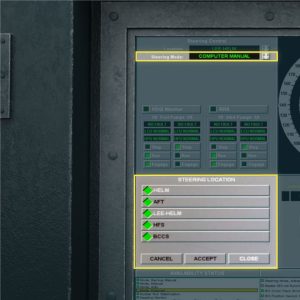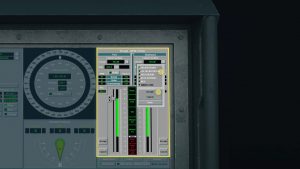
5 Star Top Professional Book on the Subject
This is a most extraordinary book intended for professional officers and petty officers, not your average day sailor. Until I was offered this book as a gift, my personal D Skipper collection consisted of three items:
- Captain's Quick Guides Rules of the Road and Running Light Patterns by Charlie Wing
- United States Coast Guard Navigation Rules and Regulations Handbook
- US Chart No. 1: Symbols, Abbreviations and terms used on Paper and Electronic Navigational Charts
This book at 542 pages is vastly more detailed, nuanced, complex, and rewarding than my three “cruising skipper” guides as it is intended for professional officers and petty officers with a particular respect for those manning warships and confronting warships in both international waters and inland waterways. It is part of the US Naval Institute Blue & Gold Professional Library that includes such standards as Command at Sea and Fleet Tactics and Naval Operations.
There is no other book like this, and this is the one book to have at the professional level. It is self-contained — the appendices include international and inland regulations, interpretative rules, selected watchstanding provisions, and vessel bridge-to-bridge radiotelephone regulations.
While the organization of the book mirrors the less complex USCG handbook, this book integrates professional level discussion rooted in real-world events and designed to help the professional naval officer engage the topics in depth well before encountering them in real life when the book will not be helpful and it will be ethical and muscle memory that saves the day.
Unlike more simplistic books, this book takes on — but is not able to itemize — the enormously complex and often changing array of inshore and offshore “special areas with special conditions” including our beloved but sometimes obstructionist whales.
I have only two concerns that bear on the matter of safety at sea but cannot be addressed by the authors because the two challenges are at the intersection of leadership and technology at the CNO level.
The authors address both submersible vessels and autonomous vessels in passing, and this is one of my two major concerns. We are not installing and respecting the sea surface radar systems we need at a time when container ships are dropping thousands of full containers into the sea many lurking just beneath the surface, while drug smugglers are ramping up their use of submersibles often made of non-reflective materials.
I also have a real problem with autonomous vessels because by their very nature the armchair warriors safe in their heated luxury basement ashore have zero situational awareness. We have established in the aviation world that on site pilots are cheaper — and have more situational awareness — than remote pilots combined with massive bandwidth (which is subject to interruption). I see man-made hazards at sea increasing by an order of magnitude very soon.
 The reader is mis-led when the author's accept at face value on page ix CNO's statement that the USS John McCain travesty stemmed in part from “insufficient knowledge and proficiency of the ship's steering system.” I have some familiarity with this matter. Seamen died because a series of CNO's went down the technology rabbit hole and allowed contractors to install deficient systems intended to reduce human manning levels; systems too hard to understand because they were integrating what used to be separate elements of command and control at sea (their design is incomprehensible to the average seaman); and the systems can balk or be unresponsive.
The reader is mis-led when the author's accept at face value on page ix CNO's statement that the USS John McCain travesty stemmed in part from “insufficient knowledge and proficiency of the ship's steering system.” I have some familiarity with this matter. Seamen died because a series of CNO's went down the technology rabbit hole and allowed contractors to install deficient systems intended to reduce human manning levels; systems too hard to understand because they were integrating what used to be separate elements of command and control at sea (their design is incomprehensible to the average seaman); and the systems can balk or be unresponsive.
 I care deeply about Safety at Sea and I care deeply about Leadership Ashore. No amount of familiarity with the rules of the road is going to save a naval vessel built by a military-industrial complex optimized for profit rather than victory at sea; or CNO's that refuse to be real about the vital need for a sufficiency of both trained humans and simplified systems able to handle adversity in peace and severe casualties in war. We have lost sight of the human factor at the CNO level. Until that deficiency is corrected, the average naval commander is more at risk from his or her own installed systems than from external factors.
I care deeply about Safety at Sea and I care deeply about Leadership Ashore. No amount of familiarity with the rules of the road is going to save a naval vessel built by a military-industrial complex optimized for profit rather than victory at sea; or CNO's that refuse to be real about the vital need for a sufficiency of both trained humans and simplified systems able to handle adversity in peace and severe casualties in war. We have lost sight of the human factor at the CNO level. Until that deficiency is corrected, the average naval commander is more at risk from his or her own installed systems than from external factors.



